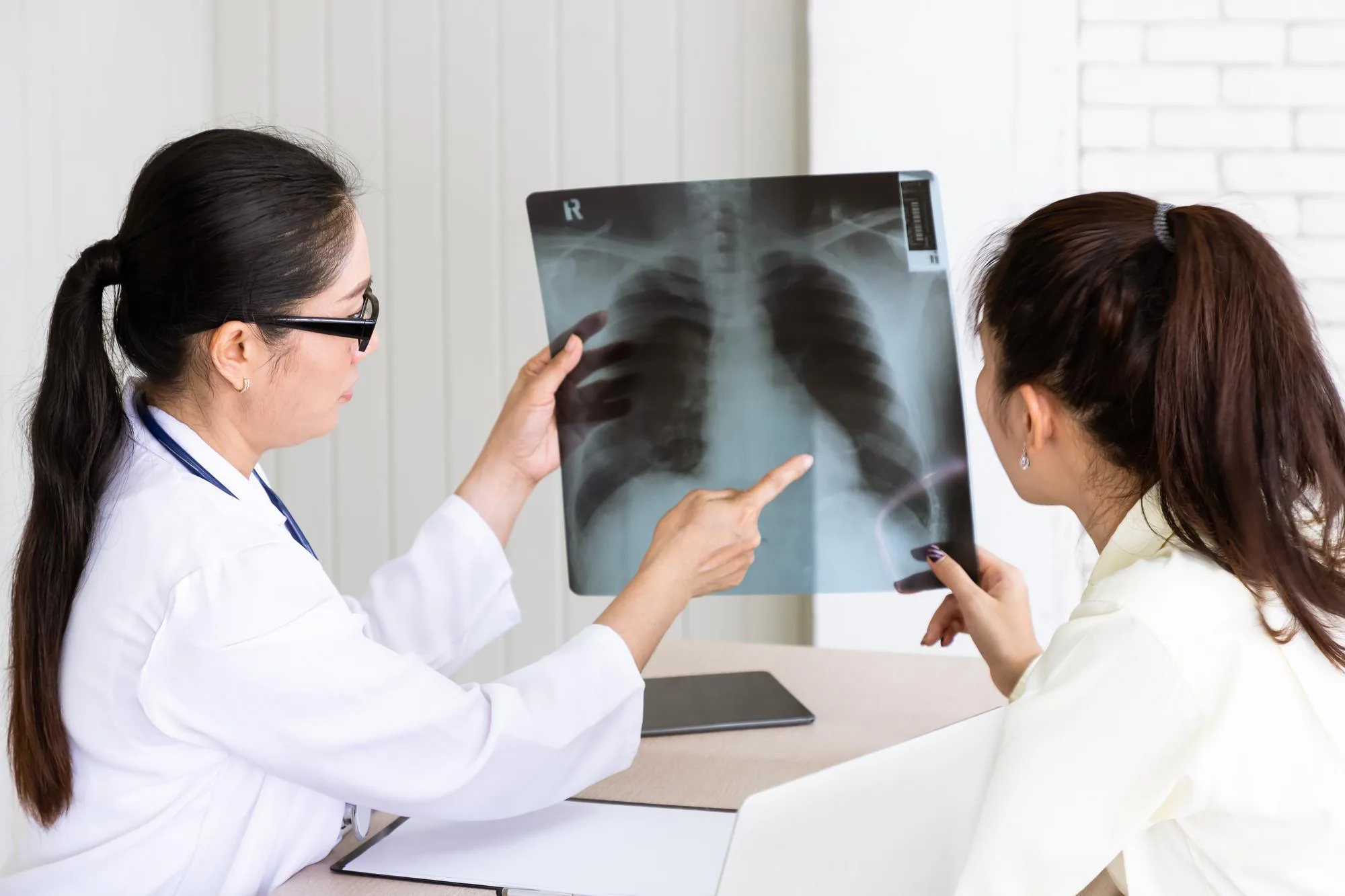
Lung cancer is cancer that begins in the lungs. It is the leading cause of cancer death in the United States, as it accounts for one in five cancer-related deaths. Detecting llung cancer in its early stages may help you slow its progression and live longer, regardless of the type of lung cancer you have. Here’s a closer look at the types and symptoms of lung cancer, along with information about screening and treatment.
Types of Lung Cancer
There are two primary types of lung cancer: non-small cell lung cancer (NSCLC) and small cell lung cancer (SCLC). NSCLC is the most common type of lung cancer; it accounts for 80% to 85% of all cases.
Types of NSCLC include:
- Adenocarcinoma. This cancer begins in lung cells that secrete mucus and is normally found in the outer part of the lung. Adenocarcinoma occurs mainly in people who smoke or who used to smoke, and it affects more women than men.
- Squamous cell carcinoma. This cancer begins in the cells that line the insides of the airways, which are called squamous cells. It is usually found in the middle part of the lungs and is more common in people who smoke or who used to smoke.
- Large cell carcinoma. This cancer can be found anywhere in the lung, and it grows and spreads faster than most other lung cancer types.
SCLC accounts for 10% to 15% of all lung cancer cases. It grows and spreads faster than NSCLC, and it often spreads outside of the lungs to other parts of the body before it is diagnosed.
The five-year relative survival rate for NSCLC is 28% for all stages combined (localized, regional, and distant). This means that if you have NSCLC, you are 28% as likely as people who do not have NSCLC to live for at least five years after you’re diagnosed. This is higher than the five-year relative survival rate for SCLC, which is 7% for all stages combined.
What Causes Lung Cancer?
Smoking is the leading cause of lung cancer. An estimated 80% of all lung cancer deaths result from smoking, while secondhand smoke is the third most common cause of lung cancer. You may be able to reduce your risk of lung cancer if you do not smoke and if you stay away from people or locations that expose you to secondhand smoke.
Other causes of and risk factors for lung cancer include:
- Exposure to radon
- Exposure to asbestos
- Exposure to other carcinogens and inhaled compounds, including uranium, diesel exhaust, arsenic, silica, and cadmium
- Excessive use of beta carotene supplements
- Having received radiation therapy to the lungs
- Exposure to outdoor air pollution
- Personal or family history of lung cancer
Symptoms of Lung Cancer
Lung cancer may or may not cause symptoms in its early stages. Symptoms of lung cancer are more likely to occur after the cancer has advanced or spread to other parts of your body. Common symptoms of lung cancer include:
- Chronic cough that may worsen over time
- Coughing up blood or phlegm
- Chest pain that may worsen when coughing, laughing, or breathing deeply
- Hoarse voice
- Loss of appetite
- Unexplained weight loss
- Shortness of breath or difficulty breathing
- Weakness
- Extreme tiredness or fatigue
- Wheezing
- Frequent respiratory infections, such as bronchitis and pneumonia
You may also experience other symptoms if the cancer has spread. These will vary depending on where the cancer has spread to. For instance, you may experience jaundice if your lung cancer has spread to your liver or nervous system changes such as dizziness or headaches if the cancer has spread to your brain.
Screening for Lung Cancer
Lung cancer screening is not typically a routine screening performed during annual physicals or wellness exams. This screening is generally only recommended for people who currently smoke, or who used to smoke, and who do not have any signs or symptoms of lung cancer.
Currently, the recommendations for lung cancer screening are as follows:
- You must be between 50 and 80 years old and in fairly good health.
- You either currently smoke or quit smoking within the last 15 years.
- You have at least a 20-pack-year smoking history. Smoking history is defined as the number of packs of cigarettes you smoked per day, multiplied by the number of years you smoked.
If you meet all of the above criteria, your doctor may have you undergo a yearly low-dose CT scan (LDCT). This screening test requires you to lie down on a flat table that slides in and out of a CT scanner, which uses X-rays to capture images of your lungs. The LDCT is painless and takes about a minute. Your doctor will review the results of your test and contact you if the test detects cancer.
Treatments for Lung Cancer
The treatment you receive for lung cancer will depend mainly on its type and severity, or stage. If you’re diagnosed with lung cancer, your healthcare provider will discuss all your available treatment options. Common treatments for lung cancer include:
- Chemotherapy, which involves the use of drugs that may destroy or shrink the cancer cells
- Radiation therapy, which uses X-ray beams to destroy the cancer cells
- Targeted therapy, which involves the use of medications that target different components of the cancer, such as certain cells, that help destroy the cancer or stop it from spreading
- Surgery, which involves removing the cancer and nearby tissues
Not smoking may be the best step you can take to reduce your risk of lung cancer. If you smoke and need assistance quitting, ask your doctor about smoking cessation treatments that may help. Make an appointment with your provider if you think you may have lung cancer based on your symptoms, or if you meet risk factors.
Resource Links
- “Key Statistics for Lung Cancer” via American Cancer Society
- “Basic Information About Lung Cancer” via Centers for Disease Control and Prevention
- “Lung Cancer Survival Rates” via American Cancer Society
- “Can Lung Cancer Be Found Early?” via American Cancer Society
- “How Is Lung Cancer Diagnosed and Treated?” via Centers for Disease Control and Prevention

